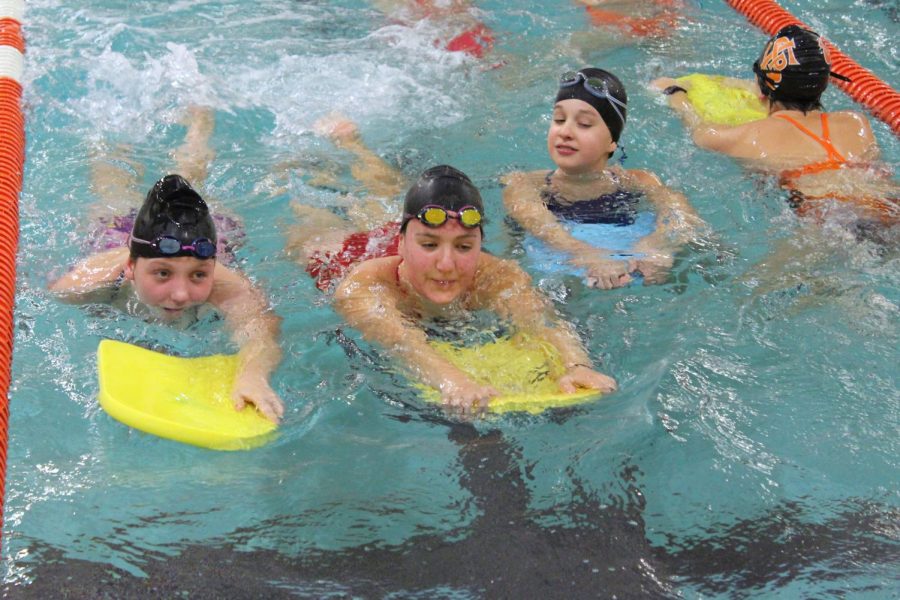Pool conditions cause difficulties for swimmers
Broken pump decreases pool temperatures
Eighth graders Quinn Hartnett, Caroline Forester and Stephanie Stone warm up in the swimming pool on kickboards during practice Oct. 22. Earlier this year the swimming pool wasn’t its usual temperature.
November 6, 2018
According to district facilities manager Tom Bravo, a pump at the high school broke the week of Sept. 29, decreasing the temperatures of the swimming pool.
“At that time it went down to 76 degrees,” Bravo said. “I don’t know if 76 is freezing but that’s the temperature that was in the pool based off of our logs here and then once the pumped was fixed it’s back up to, I can see right in front of me, 81 degrees, which is at the standard.”
Swimmer Sara Anderson, who is a senior, said during practice that week she was unable to move easily in the water.
“It was weird. Since I am one of the bigger people on the team, I didn’t notice it as much but we had girls like whose lips were blue they were like shaking the whole practice and everybody felt like really stiff and couldn’t get warm,” Anderson said.
According to the International Swimming Federation, responsible for administering competitions at the Olympic Games, swimming pool temperatures are required to be between 77 and 82 degrees Fahrenheit. Water temperatures below this range can cause difficulty breathing and potentially impact circulation, according to the National Center for Cold Water Safety.
Swimming coach Amanda Forsberg said the coaching staff would never compromise the safety of the swimmers.
“We still could’ve used the pool, but we decided to go to the junior high for a day,” Forsberg said. “It was a little colder than normal, but there was never any danger, or being outside of the realms of too cold or too hot. Pools have maintenance issues, there was just a little thing that needed to be fixed.”
Anderson said the temperature of the pool has not been an issue in the past.
“Normally it feels cold but like you can still perform to the best of your ability like our pool was too cold we couldn’t really move,” Anderson said. “I completed the practice and then (swimmers) notified our coaches and the athletic director and then they called people to fix the pool.”
According to Forsberg, intentional temperature changes transition the pool from different sports season to help with performance.
“Temperatures are going to fluctuate a little bit,” Forsberg said. “When synchro’s in there they bring it up a little bit and when we’re in there they drop it down.”






